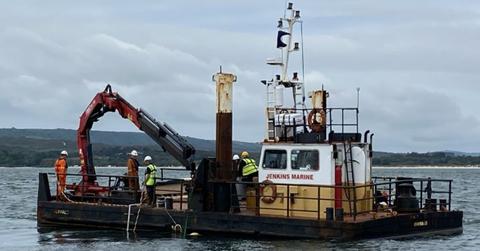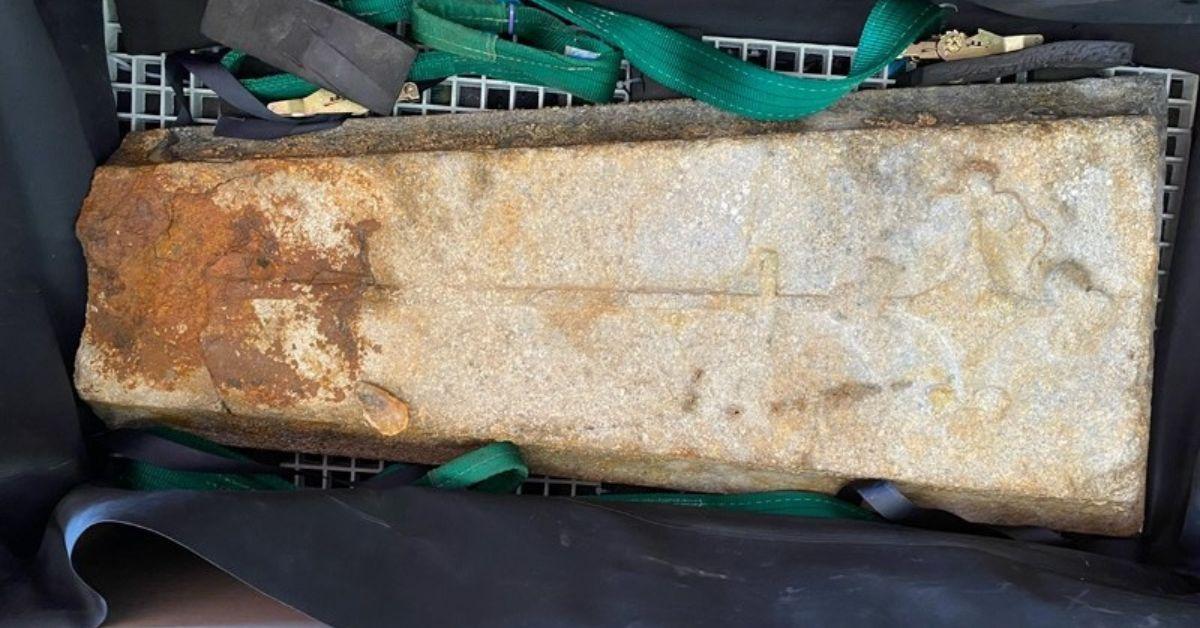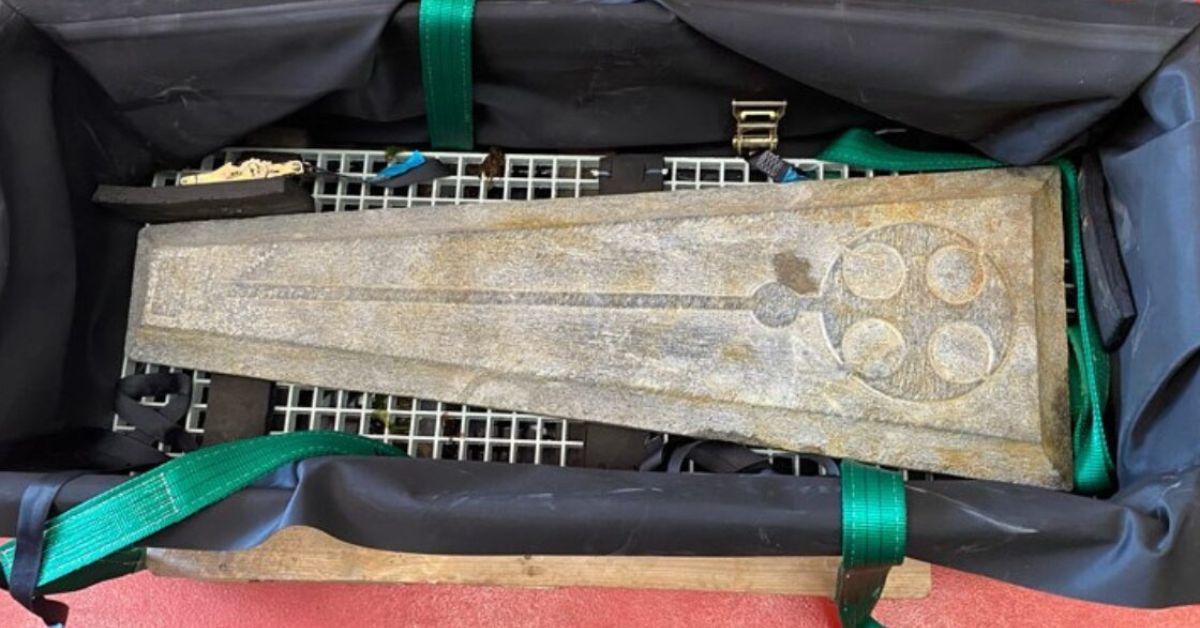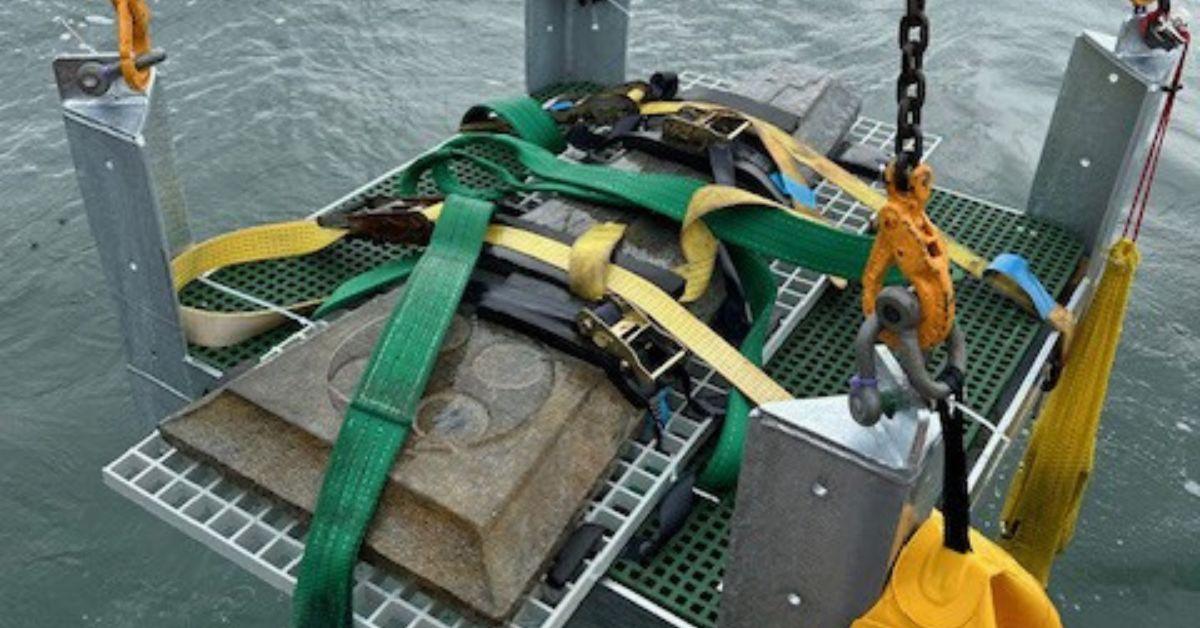Sunken Treasure: Gravestones in 'Immaculate Condition' Discovered in 800-Year-Old English Channel Shipwreck

The barge used in the recovery led by England’s Bournemouth University.
Two Pristine Grave Slabs Found from Shipwreck

A ship carrying a load of marble sank, and although the wreck was discovered in 1982, divers initially mistook it for a mere pile of rubble.
Underwater archaeologists have recovered two remarkably well-preserved gravestones from an eight-century-old shipwreck in the English Channel.
Nearly 800 years ago, a vessel carrying a load of marble sank, and although the wreck was discovered in 1982, divers initially mistook it for a mere pile of rubble, according to Knewz.com.
Pieces in Immaculate Condition

The gravestone was carved from Purbeck Marble.
After two hours of work at a depth of around 22 feet, the team recovered two marble slabs. One slab, in “immaculate condition,” weighs approximately 154 pounds. The second, recovered in two parts, has a combined length of six feet and weighs about 440 pounds.
Both pieces are carved from Purbeck Marble, a unique rock type quarried on a peninsula jutting into the English Channel opposite France. This discovery resolved a long-standing debate regarding the processing of these stone pieces.
- What Lies Beneath: NASA Scientist Believes Aliens May Have Found 'Perfect' Hiding Spot in Earth's Oceans
- Global Threat: Russia Insider Warns West of 'World War Using Nuclear Weapons' Amid Escalating Support for Ukraine
- Countdown to Disaster? Ex-NATO Official Warns Russia, Iran and China Could Wage WWIII in Just Years
Archaeologist Poses with the Grave Slabs

Tom Cousins with the gravestones.
“Although Purbeck marble was quarried near Corfe Castle, there has always been a debate about how much work was done here [in Bournemouth] and how much was done in London,” explained Tom Cousins, an archaeologist at Bournemouth University. “Now we know they were definitely carving them here, but they hadn’t been polished into the usual shiny finish at the time they sank, so there is still more we can learn.”
The gravestones feature Christian crosses in a style favored by 13th-century clergymen, especially bishops, archbishops and other high-ranking religious figures in England. Such gravestones have been found in Westminster Abbey, Canterbury Cathedral and Salisbury Cathedral, according to Cousins.
Experts Work to Recover the Grave Slabs

One of the gravestones being hoisted off the seabed.
However, The Britain Express publication clarifies that the stone used for these slabs is not true marble but a form of “crystalline limestone.” This rock, highly sought after in the 13th century, was often used in constructing compound pillars and expensive memorials.
Looking ahead, Cousins and his team plan to continue exploring the wreck. They aim to record the ship’s timber frames, which are expected to be well-preserved in the seabed soil. Cousins expressed his enthusiasm for the educational potential of the wreck.
“The future aim of the project is to train the next generation so that they get the same opportunities I had. We’ve already started teaching our second-year students to dive, and as they get into their third year, we’re going to take them out to sea and teach them the first steps to becoming maritime archaeologists,” he said.
Become a Front Page Detective
Sign up to receive breaking
Front Page Detectives
news and exclusive investigations.
